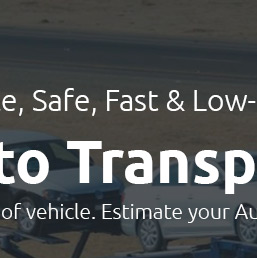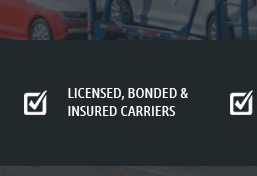 |
|||||
 |
 |
 |
 |
 |
|||||
 |
 |
 |
 |
 |
 |
 |
||
 |
 |
 |
 |
 |
 |
 |
 |
 |
 |
|
How to Ship a Car Cross Country: A Comprehensive GuideShipping a car across the country can seem daunting at first, but with the right preparation and understanding, it can be a straightforward and even rewarding experience. Whether you're relocating for a new job, purchasing a vehicle from a distant seller, or embarking on an extended vacation, knowing how to transport your car efficiently is crucial. First and foremost, it's important to choose the right shipping method. Generally, you have two main options: open transport and enclosed transport. Open transport is the most common and cost-effective method, where vehicles are transported on an open carrier, exposed to weather elements. While this might sound concerning, it's worth noting that the vast majority of cars are shipped this way safely every year. On the other hand, enclosed transport provides additional protection from the elements, making it an excellent choice for luxury, classic, or high-value vehicles, albeit at a higher cost. Once you've selected a shipping method, the next step is to research and choose a reputable car shipping company. This process involves gathering quotes, reading reviews, and checking credentials. Look for companies that are registered with the Federal Motor Carrier Safety Administration (FMCSA), as this ensures they comply with industry regulations. It's also beneficial to get recommendations from friends or family who have previously shipped vehicles. Preparing your vehicle for transport is another essential step. This includes cleaning your car, removing personal items, and conducting a thorough inspection. Take photos of your car from various angles to document its condition before shipping. This documentation will be invaluable should any disputes arise regarding potential damages incurred during transit. Insurance coverage is a critical component often overlooked by many. Most auto transport companies offer basic liability insurance, but it's wise to review the policy details to ensure adequate coverage. Consider purchasing additional insurance if you feel the coverage provided is insufficient, especially for high-value vehicles. On the day of pickup, make sure to be present or have a trusted representative available. The carrier will conduct a detailed inspection and provide a Bill of Lading, which serves as a receipt and condition report. Carefully review this document before signing, ensuring all details are accurately recorded. During transit, patience is key. Transport times can vary significantly based on distance, weather conditions, and unforeseen delays. Most companies offer tracking services, allowing you to monitor your car's progress across the country. Upon delivery, conduct a final inspection with the driver. Compare the car's condition to the photos taken prior to shipping and the original inspection report. If there are any discrepancies, document them immediately and notify the shipping company to initiate a claims process. In conclusion, while shipping a car cross country requires careful planning and attention to detail, it doesn't have to be a stressful endeavor. By choosing the right transport method, selecting a reputable company, adequately preparing your vehicle, and understanding insurance and documentation processes, you can ensure a smooth and successful experience. As with any significant undertaking, due diligence and preparation are your best allies. https://www.pods.com/blog/shipping-a-car
Determine Your Desired Vehicle Shipping Date Right Away. - Research How To Ship a Car. - Pick a Reliable Car Shipping Company. - Choose the Right ... https://www.transvirtual.com/us/blog/shipping-your-car-cross-country-costs-options-and-solutions/
Make your car shipping experience seamless with Transvirtual's powerful solutionsrate cards, TMS, route optimization, real-time tracking, and ... https://www.transvirtual.com/us/blog/shipping-your-car-cross-country-costs-options-and-solutions/
Make your car shipping experience seamless with Transvirtual's powerful solutionsrate cards, TMS, route optimization, real-time tracking, and ...
|